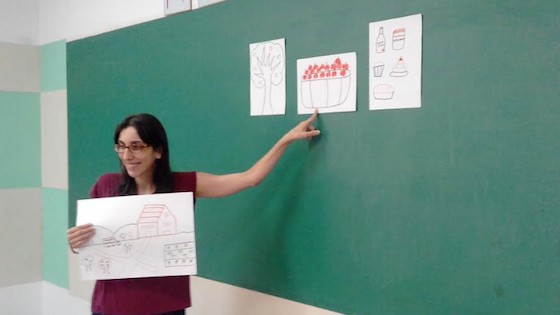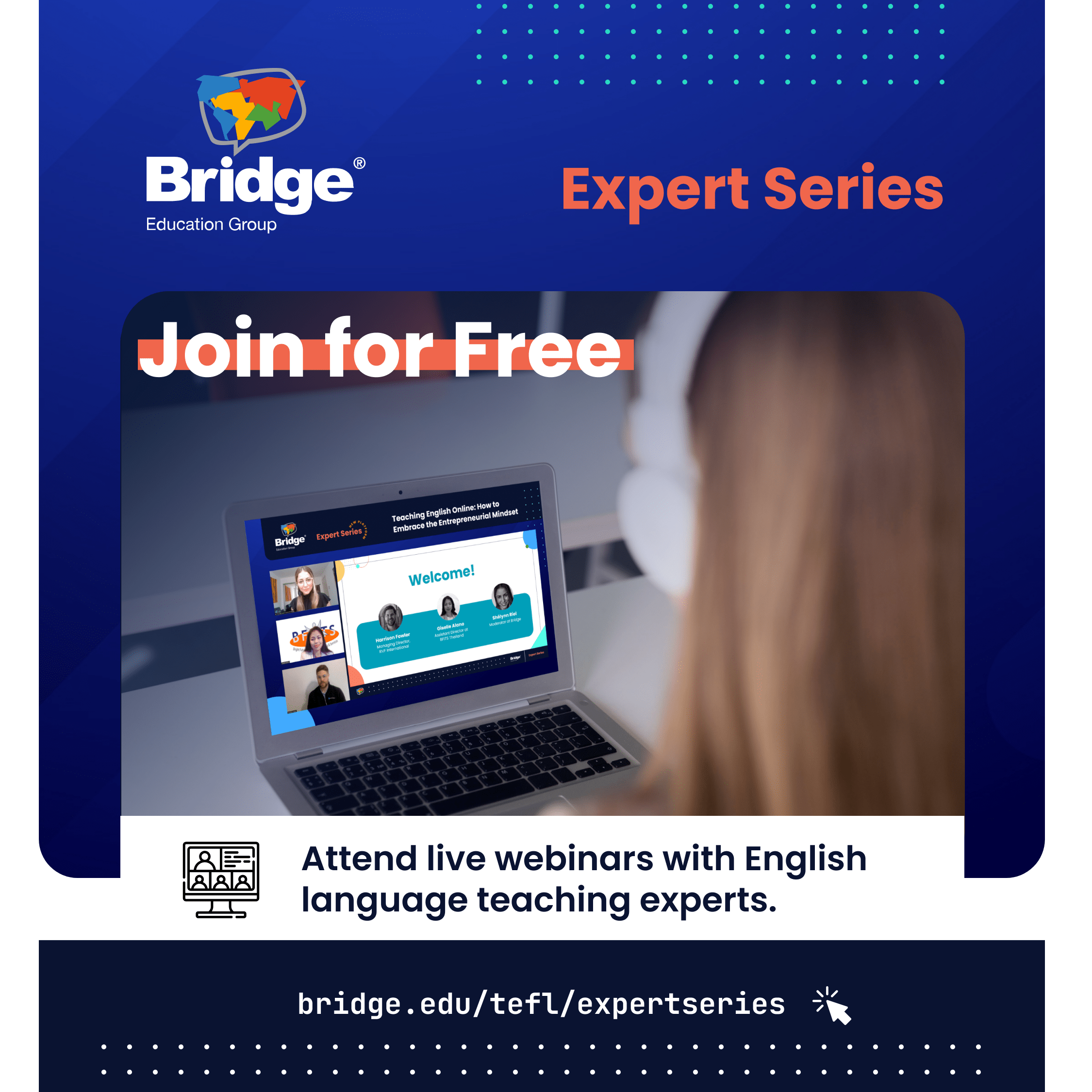Her goals: better ESL classrooms and a better world. We spoke with Juliana, a Brazilian ESL teacher in Sao Paulo, Brazil. Juliana believes that young learners’ “curiosity can help you to think about amazing classes.” Her unique teaching ideas are helping her students to make the world a better place. Read about Juliana’s pursuit to help her students become global citizens while learning English.
Could you share a little about your background?
My name is Juliana and I was born in Sao Paulo, Brazil! I have a degree in Languages, and I can teach both English and Portuguese here in Brazil. I graduated in 2003 and got my first job in 2004. I was so lucky as it is the same school that I still teach at! I have been able to grow as a teacher there, and I am so grateful for the school to have given this opportunity to someone who had no work experience at all! They believed in me, and I am so grateful for that.
I used to teach kids between the ages of 2-10. Now, I teach only the very young learners (ages 2-6). I love teaching them! I even have an Instagram account (@englishteacherju) where I share activities and other things about teaching English to young learners!
How did you get started teaching English?
Actually, after my graduation from college, I had no idea what I wanted to do. First, I love literature and I thought about getting a master’s degree in English Literature to work with research and at colleges. However, two months after I graduated from college, I had an opportunity for an interview in this school— I went and got the job. I could not believe it. I always loved learning about the English language, and then I was teaching it!
You are currently taking the BridgeTEFL 60-Hour Educator Course. Why did you decide to get TEFL certified after 15 years of teaching English?
You can never know too much or be too old to learn. There is always room for improvement! You can always make things better. The way to do that? Studying! You have to study hard to better understand how someone learns. That will make your classes better for your students and for you! The course I’m currently taking is making me think about everything I have been doing and how I can make things better!
Is English your first language? If not, how has this shaped the way you teach?
English is not my first language. My first language is Portuguese. This helps me to understand how hard it can be for a student to understand another language and the ways I can make it easier for them. For example, I can use visual resources or bring songs.
The students use Portuguese and English in the classroom— it depends on how comfortable they feel in the class and about the topic we are talking about. I try not to use Portuguese in the classroom because I think it is important to listen to the target language as much as possible. I am even trying to use more English. Since my students are so young, I let them play a lot and talk to them in English while they are playing so it becomes more natural to listen to and speak the language.
Learn about how to teach kids English.
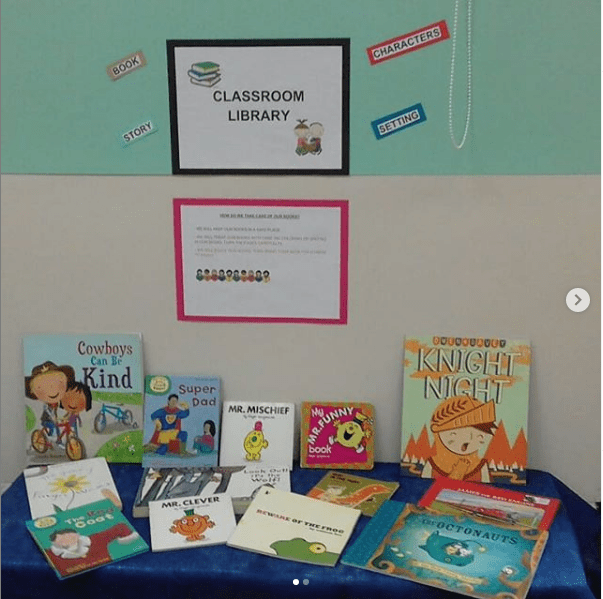
Juliana’s classroom library filled with children’s books in English
Could you tell us more about your current job?
I teach in a private school. It is a regular school in the morning, which means students have 2-3 English classes per week. They can also choose to have more English classes in the afternoon. I, however, only teach in the morning. My students have 2 classes per week and they are very young learners: 2-6 years old.
My typical workday includes setting up the English classroom so when the kids arrive everything is already done: investigation tables, workstations, worksheets, and books. I teach 5 classes a day, so it is pretty much about having everything that I need for that day ready. It really is important to do this so when I am in class I only have to think about observing and helping my students.
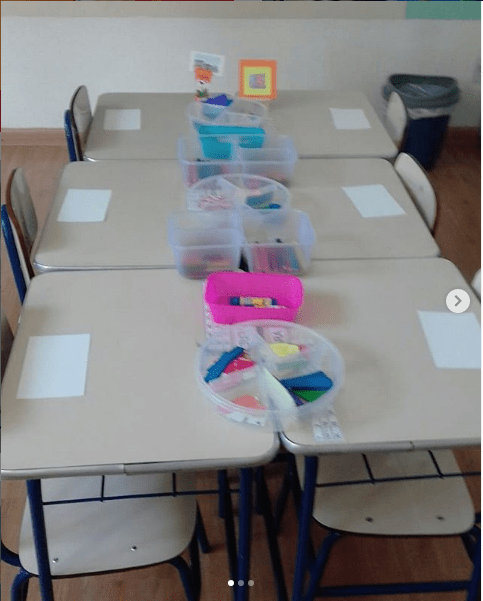
A workstation in Juliana’s classroom
Do you have any favorite activities, lessons, or techniques for teaching young learners that you like to use in the classroom?
It is important to know this about young learners: their curiosity can help you to think about amazing classes. Kids are curious— they like to understand how things happen, and of course, you can use that in your ESL class! You can come up with interesting topics and things that kids are interested in and bring those into your classroom. It will be fun, and learning a language this way is so much more natural.
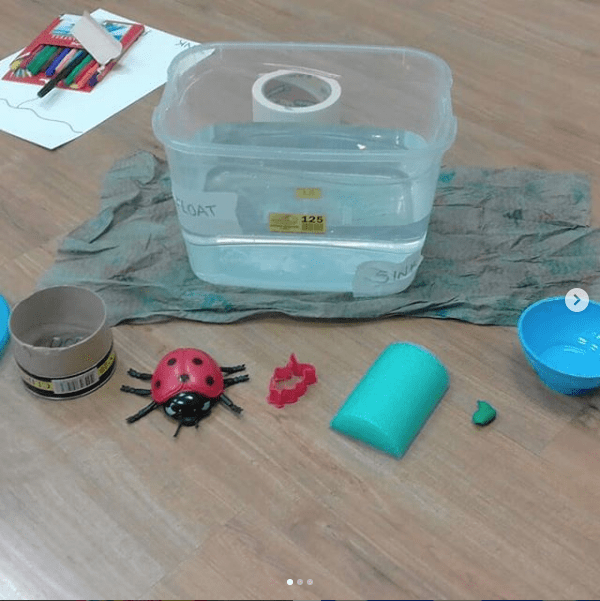
Juliana’s class experiments to see what sinks or floats
I saw on your Instagram that you use “investigation tables” throughout your classes. Could you explain what these are and how they help your students?
Investigation tables can be of anything. You can choose a topic and set a table up with everything about that topic using pictures, books, realia, videos – they love to use an app for reading QR codes and find out what the video is about— etc. After that, you can talk to them about what they saw on the table and what they think about it. It is really like an investigation to find out more information about the next theme. I like to use that to introduce topics, that way I can be sure of what they like about the theme and then bring that into the classroom.
Read this post for more ideas on using realia in the classroom.
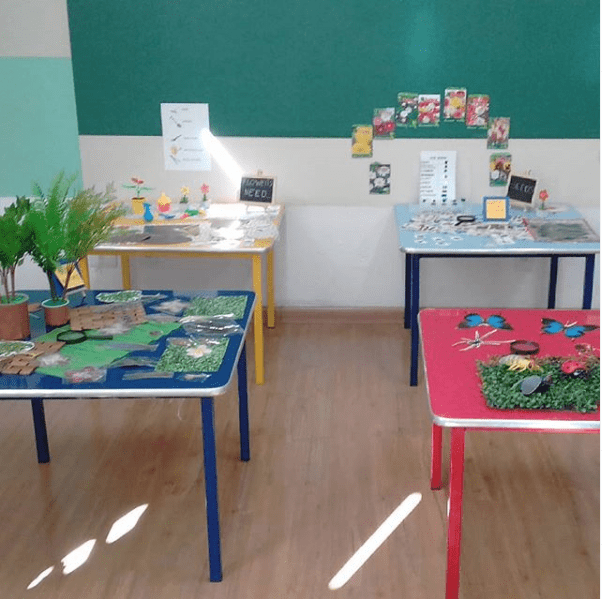
Juliana’s set of “Learning About the Garden” investigation tables
You have a lengthy career as an English teacher. What are some takeaways or lessons you have learned from teaching ESL?
I learned that you can teach anything in a second language. It is not only about grammar and structures. Of course, these things are important and should be taught, but I do think we need to do that in a natural way. We must remember classes should be fun and should reflect real-life situations. We need to hear our students and their needs, that way our classes will be more effective.
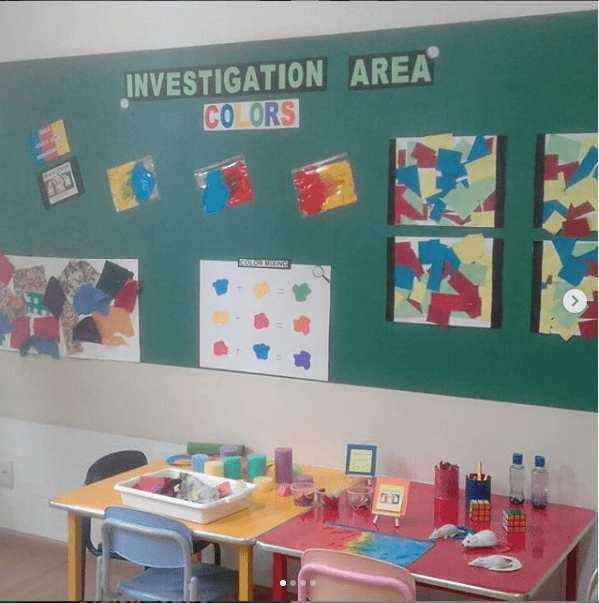
Investigation Area: Colors
Can you share a memorable experience from your TESOL career?
There are so many! I will share one from this year. I had the chance to have a family workshop! I have a project called “We Are a Team,” and all of my students are part of this project. I work on things such as how to protect nature and how to be a better friend. In May, I had the chance to have the students and their families together in the classroom. I spoke to the parents about the project, how important it is to think about things to make this world a better place, and how we could talk and learn about them in our English class. It was so great and meaningful for all of us, and everyone could see that the English class is not only about the language!
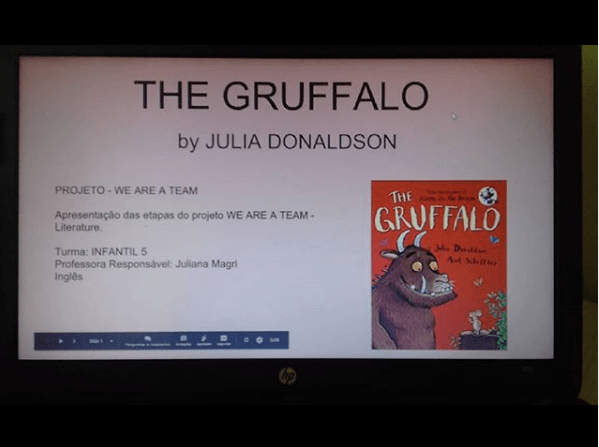
Juliana’s We Are a Team project, uses “learning through literature” to teach how to protect the animals and forests
What advice would you give to someone looking to teach ESL to young learners?
Keep studying! You have to study the language, approaches, and how kids learn and acquire a second language. You also need to read a lot about child development! It is also important to keep in touch with other teachers to share ideas!
Do you have any plans or goals for continuing your TESOL career?
I do! I really want to work as a consultant for teachers and schools. It is a goal of mine to work with teachers and schools that want to improve their classes. I love the idea of talking to other teachers to share ideas and come up with the best way to teach English as a second language.





